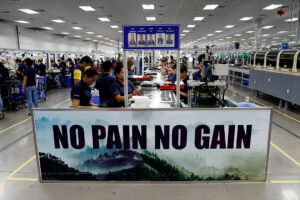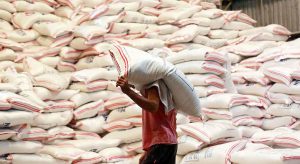October factory output growth slows

By Luisa Maria Jacinta C. Jocson, Reporter
FACTORY OUTPUT in the Philippines expanded at a slower pace in October, reflecting a modest uptick in new orders despite elevated inflation and supply chain disruptions, S&P Global said on Wednesday.
The S&P Global Philippines Manufacturing Purchasing Managers’ Index (PMI) stood at 52.6 in October, lower than 52.9 in September.
Despite the slightly slower expansion, S&P Global said the Philippine index was still above the historical average.
A PMI reading above 50 denotes better operating conditions than in the preceding month, while a reading below 50 signals the opposite.
“The latest PMI data revealed yet another round of expansion across the Filipino manufacturing sector. Demand conditions continued to improve, resulting in a further rise in output and new business placed at goods producers,” Maryam Baluch, an economist at S&P Global Market Intelligence, said in a report.
The headline PMI measures manufacturing conditions through the weighted average of five indices: new orders (30%), output (25%), employment (20%), suppliers’ delivery times (15%) and stocks of purchases (10%).
Philippine manufacturing companies reported improved demand in October, driving growth in production and new orders for a second straight month, S&P Global said.
“While overall factory orders increased, volumes of new work from abroad contracted at the sharpest pace since the recent sequence of decline began in March,” it said.
Manufacturers also increased their workforce for a sixth straight month, while input-buying activity rose for a second month in a row although slower.
“Despite the pace of the latest upturns easing slightly on the month, firms continued to increase capacity and stocks to support future growth,” Ms. Baluch said.
S&P Global noted that supply-side constraints had plagued the manufacturing sector, as vendor performance declined sharply and extension of delivery times lengthened. The shipping delays were mainly attributed to bad weather and port congestion.
Higher demand and supply chain disruptions led to more work backlogs for a second straight month.
However, S&P Global said increasing inflationary pressures were felt by manufacturing firms in the Philippines.
In September, headline inflation quickened to 6.9%.
“Average costs increased at a quicker rate compared with that seen in September. Additionally, while factory gate charges rose at a marginally softer rate during October, the latest reading ranked amongst the fastest on record (since January 2016),” it said.
After easing to a 20-month low in September, input price inflation rose in October due to higher energy and material costs as the peso weakened against the US dollar.
Despite this, manufacturers hiked charges at the slowest pace since February.
They remained optimistic on output estimates for the next 12 months as they expect a continued rise in demand, S&P Global said.
Factory activity remained expansionary despite elevated inflation and the peso depreciation, Security Bank Corp. Chief Economist Robert Dan J. Roces said
“This may be attributed to inventory buildup amid peak demand season and sustained looser mobility curbs,” he said in an e-mail.
While this bodes well for economic growth for the rest of the year, Mr. Roces said rising input prices and supply constraints might hamper expansion in the manufacturing sector.
The industry’s expansion might have been driven by local demand since exports have been declining, UnionBank of the Philippines, Inc. Chief Economist Ruben Carlo O. Asuncion said
FASTEST IN ASIAThe Philippines recorded the highest PMI reading among six Southeast Asian countries, followed by Indonesia (51.8), Thailand (51.6) and Vietnam (50.6). Manufacturing activity in Malaysia (48.7) and Myanmar (45.7) contracted in October.
On average, the Association of Southeast Asian Nations (ASEAN) headline PMI stood at 51.6 in October, easing from 53.5 in September.
S&P Global said this was the slowest improvement in operating conditions across the region since the series of expansion began in October 2021.
“ASEAN’s PMI is finally coming back down to earth,” Pantheon Chief Emerging Asia Economist Miguel Chanco said.
“The ASEAN-wide details suggest that more headline softness is coming. We reckon that any convergence implies a further deceleration in output gains, especially when considering the still-rapid buildup in inventories of finished goods, and the third decline in backlogs of work in the last four months,” he added.




